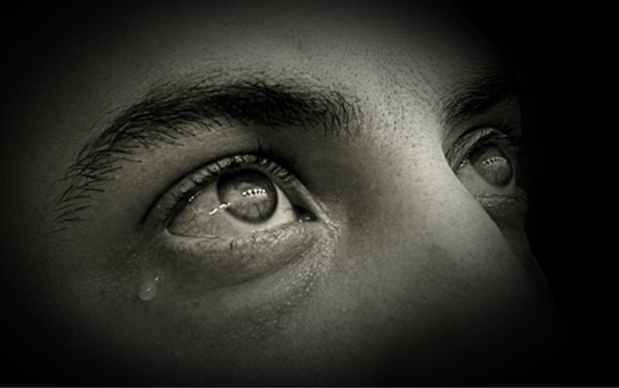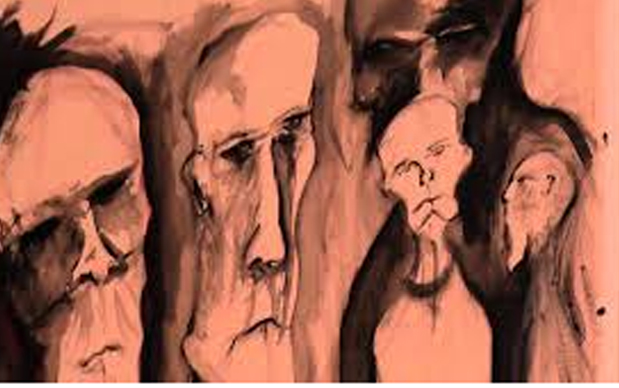Mental Health
Behavior

Impulsive behavior is common, including substance or alcohol abuse, eating disorders, unprotected sex or indiscriminate sex with multiple partners, reckless spending, and reckless driving. Impulsive behavior may also include leaving jobs or relationships, running away, and self-injury. People with BPD act impulsively because it gives them the feeling of immediate relief from their emotional pain. However, in the long term, people with BPD suffer increased pain from the shame and guilt that follow such actions. A cycle often begins in which people with BPD feel emotional pain, engage in impulsive behavior to relieve that pain, feel shame and guilt over their actions, feel emotional pain from the shame and guilt, and then experience stronger urges to engage in impulsive behavior to relieve the new pain. As time goes on, impulsive behavior may become an automatic response to emotional pain.
Self-harm and suicide

Scars from self-harm is a common sign in borderline personality disorder.
Self-harming or suicidal behavior is one of the core diagnostic criteria in the DSM-5. Self-harm occurs in 50 to 80% of people with BPD. The most frequent method of self-harm is cutting. Bruising, burning, head banging or biting are not uncommon with BPD.
The lifetime risk of suicide among people with BPD is between 3% and 10%. There is evidence that men diagnosed with BPD are approximately twice as likely to die by suicide as women diagnosed with BPD. There is also evidence that a considerable percentage of men who die by suicide may have undiagnosed BPD.
The reported reasons for self-harm differ from the reasons for suicide attempts. Nearly 70% of people with BPD self-harm without trying to end their life. Reasons for self-harm include expressing anger, self-punishment, generating normal feelings (often in response to dissociation), and distracting oneself from emotional pain or difficult circumstances. In contrast, suicide attempts typically reflect a belief that others will be better off following the suicide. Both suicidal and self-harm are a response to feeling negative emotions. Sexual abuse can be a particular trigger for suicidal behavior in adolescents with BPD tendencies.
Interpersonal relationships
People with BPD can be very sensitive to the way others treat them, by feeling intense joy and gratitude at perceived expressions of kindness, and intense sadness or anger at perceived criticism or hurtfulness. Their feelings about others often shift from admiration or love to anger or dislike after a disappointment, a threat of losing someone, or a perceived loss of esteem in the eyes of someone they value. This phenomenon, sometimes called splitting, includes a shift from idealizing others to devaluing them. Combined with mood disturbances, idealization and devaluation can undermine relationships with family, friends, and co-workers. Self-image can also change rapidly from healthy to unhealthy.
While strongly desiring intimacy, people with BPD tend toward insecure, avoidant or ambivalent, or fearfully preoccupied attachment patterns in relationships, and they often view the world as dangerous and malevolent. BPD, like other personality disorders, is linked to increased levels of chronic stress and conflict in romantic relationships, decreased satisfaction on the part of romantic partners, abuse, and unwanted pregnancy.
Sense of self

People with BPD tend to have trouble seeing a clear picture of their identity. In particular, they tend to have difficulty knowing what they value, believe, prefer, and enjoy. They are often unsure about their long-term goals for relationships and jobs. This difficulty with knowing who they are and what they value can cause people with BPD to experience feeling "empty" and "lost".
Cognitions
The often intense emotions experienced by people with BPD can make it difficult for them to control the focus of their attention—to concentrate. In addition, people with BPD may tend to dissociate, which can be thought of as an intense form of "zoning out". Dissociation often occurs in response to experiencing a painful event (or experiencing something that triggers the memory of a painful event). It involves the mind automatically redirecting attention away from that event, presumably to protect against experiencing intense emotion and unwanted behavioral impulses that such emotion might otherwise trigger.
Although the mind's habit of blocking out intense painful emotions may provide temporary relief, it can also have the unwanted side effect of blocking or blunting the experience of ordinary emotions, reducing the access of people with BPD to the information contained in those emotions, which helps guide effective decision-making in daily life. Sometimes, it is possible for another person to tell when someone with BPD is dissociating, because their facial or vocal expressions may become flat or expressionless, or they may appear to be distracted; at other times, dissociation may be barely noticeable.
Disability

BPD is related to lower functioning and disability, even when socioeconomic status, medical conditions, and all psychiatric disorders were controlled.34 Further, it is more common for females with BPD to experience disabilities than males with BPD.34 More research is necessary to determine if this is due to a genetic sex difference or social reasons, but more females with BPD are diagnosed than males.